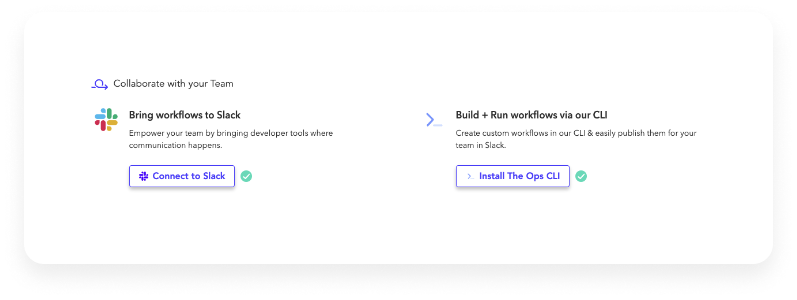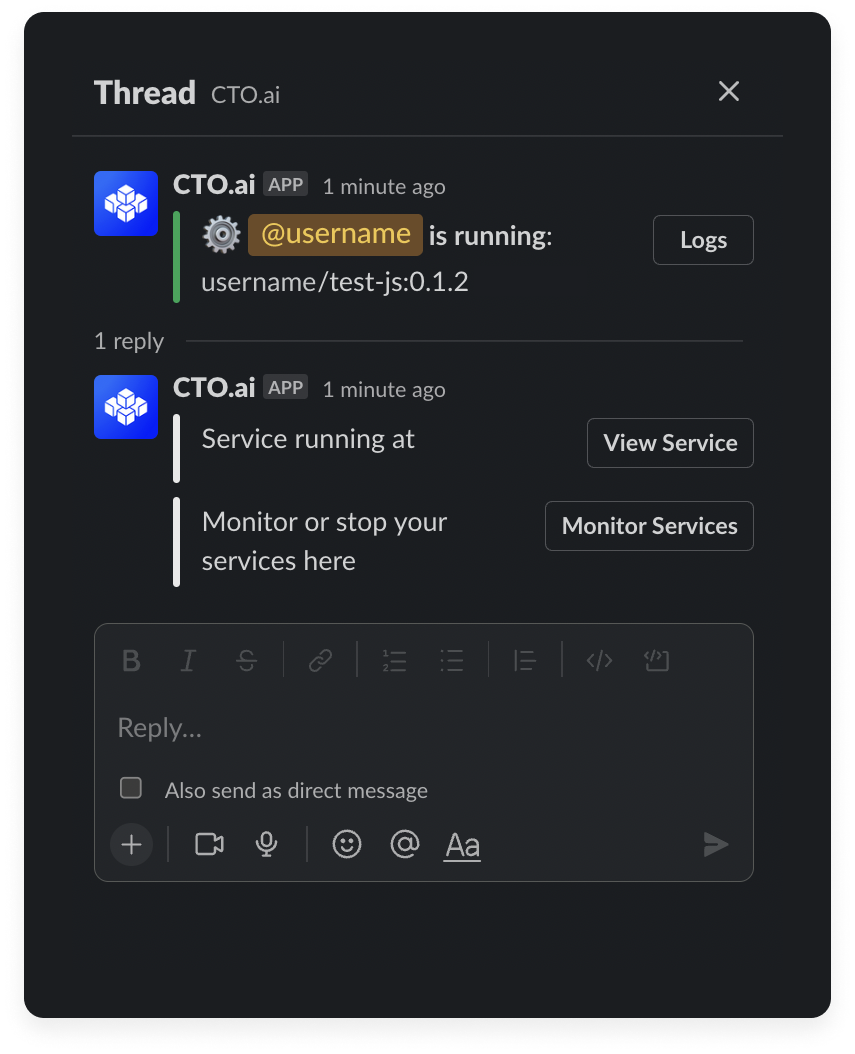DevOps Engineers and developers have become accustomed to setting up CI/CD pipelines and building infrastructure manually through the CLI or build scripts. In traditional infrastructure deployment, you must build and run your applications by writing configuration and deployment files whenever you want to deploy new changes. This process consumes a lot of time and prevents your team from deploying and delivering new product features.
ChatOps makes DevOps processes more automated by connecting teams, tools, and processes to create an automated and transparent workflow where everyone can see different builds and deployments happening simultaneously.
Collaboration and application deployment has become much easier for DevOps and Platform Engineers with CTO.ai’s latest additional feature to our Slack Integration: Slack Threads. With the CTO.ai ChatOps integration, you can build your applications, deploy your services, and interact with your infrastructure commands to know when a build and deployment are successful within your team’s Slack Workspace. The combination of Slack-threaded workflows and SDLC practices increases platform flows and enhances communication and transparency with minimal friction. You can control your whole DevOps processes using Slack, as well as enable a command to be run with different resources and automate routine tasks easily.
Using Slack threads reduces friction amongst teams deploying services and configuring centralized workflow for automated deployment. Check out how ChatOps and CTO.ai Slack threads can enable a conversation-driven collaboration to help Platform and DevOps Engineers work productively even in remote working environments.
Let’s get you started. But before we go deeper into this introduction to Slack Threads, firstly log in to your CTO.ai account and install the Slack App in your Slack workspace. Please note that you will need Admin permissions to install our integration into your team’s workspace.
Enable ChatOps on CTO.ai
Back in your CTO.ai dashboard, under the Collaborate with your Team section, click on Connect to Slack.

- You’ll be redirected to select your Slack workspace. Select the Workspace where you’d like to install the integration.

- Next, once you’ve set up the Slack integration to your workspace, you can now start building, running, and publishing your CI/CD pipelines, services, and commands directly from your workspace. With Slack thread workflows, you’ll be able to build a complex set of repeatable commands, execute steps and deploy to production directly from your Slack workspace without calling them outside of the build process.
- In your Slack workspace, list your running resources using the
/ops listcommand.

- Next, to test how slack threads work, build any of your resources (commands, pipeline, or service) here; I’ll build and run the
test-jscommand using/ops run test-js
- Automatically in the Slack thread, the CTO.ai app will ask which application you want to deploy, give it a response and type the of the application; here mine is
test-js
- Next, it’ll start rolling out the deployment of your
test-jscommand; when it’s done, it will give you the final workflow output that your deployment was successful in the thread we started.
- Run other workflows like Pipelines and Services, and view your pipeline logs directly from your threads on Slack by running
/ops run <name_of_pipeline_or_service>directly in your Slack workspace; you can view your running service or monitor your services directly on the CTO.ai dashboard.

Want to see Slack Threads in action? Check out our video:
Some of our customers, like Rocket Money, are already using Slack threads.
Here is what they say about this new feature:
"The team really likes [Slack Threads]! It's way cleaner and has greatly improved the signal:noise ratio in our deployments channel while preserving the details in the thread for those who need it."
- Staff Infrastructure Engineer @ Rocket Money
Never miss any deployment updates with our Slack Thread feature
By integrating ChatOps into your existing toolset and applications, you can connect processes, create a conversational deployment strategy, and extend your existing pockets of automation into a productive workflow. Slack threads optimize the visibility of your application deployment pipelines and offer up-to-date data to improve your software delivery cycle.

Comments